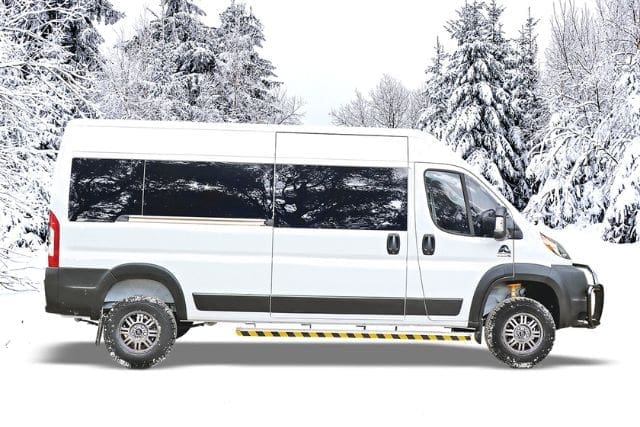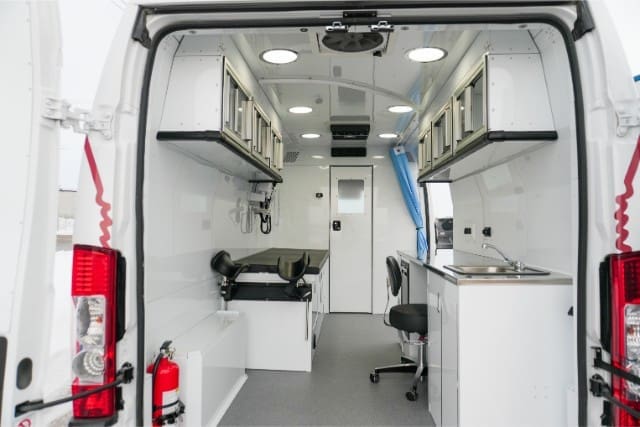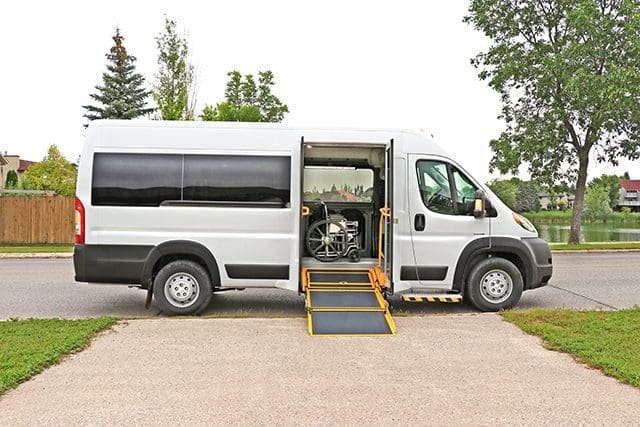Do you live in a remote location and need a wheelchair van?
Are you wondering how your van will get to you?
If so, you’ve come to the right place.
Here at MoveMobility, we understand how difficult it can be for remote communities to get accessible vehicles, especially First Nations communities, which we can only reach by using winter roads.
We deliver accessible wheelchair vehicles to 60-70 remote locations in Manitoba and Ontario–so we’ve learned how to make the process as efficient as possible.
In this article, we will go over what delivering wheelchair vans to remote locations in Canada looks like from MoveMobility.
And we will also take a look at what makes a van good for rough winter roads.
What delivering wheelchair vans to remote locations looks like
There are two factors that make up the bulk of our delivery process to remote locations here at MoveMobility:
- Ordering your van at the right time
- Transporting your van as close to you as we can
Getting your wheelchair-accessible vehicle to you depends mainly on timing.
1: Ordering your van at the right time
Many remote communities can only be delivered to by winter roads, meaning ice needs to freeze enough that our wheelchair vans can be driven across a body of frozen water.
Winter roads are typically safe to cross during January and February.
This means you should order your van by October or November so that we have enough time to convert it and prepare it for delivery–and so that you can avoid the seasonal rush!
The next step in our delivery process to remote locations is getting the vehicle as close to your location as possible.
2: Transporting your van as close to you as we can
We can’t always deliver the van all the way to remote locations, so instead, we deliver it as close to you as we can.
This usually means we deliver the van to the closest town to you or the nearest urban reserve.
For example, we frequently deliver to Thompson, Manitoba, because it is the closest we can get to remote communities in northern Manitoba.
Want to know how long it will take us to deliver your van? Talk to a MoveMobility expert now.
Or, if you want to know what the service looks like from MoveMobility, check out this article.
Qualities that make a van good for winter roads

Certain qualities make a wheelchair-accessible van good–or bad–for remote locations.
Let’s dive into some of these qualities now.
1: No hydraulics
Mobility van conversions often consist of either hydraulic or manual equipment. Hydraulic equipment can be less reliable in cold weather.
So, we recommend having a wheelchair van with only manual parts and equipment to ensure reliability in any climate.
2. Manual ramp
A manual ramp is great for remote locations because it won’t break down due to cold weather.
It’s still good to remember, though, that drivers need to be strong enough to push the passenger up the ramp.
3. Nothing low to the ground (good ground clearance)
When you’re driving a wheelchair van on winter roads, it’s important to make sure nothing is low to the ground so that your equipment won’t get damaged by snow. High ground clearance prevents scraping and getting stuck on snow and ice.
What is the best wheelchair van for remote communities?
There’s one specific van we recommend for remote communities that use winter roads:
The Trail Van

The Trail Edition Ram Promaster is specially designed for remote and rural communities struggling to find wheelchair-accessible off-road vehicles.
If your community relies on winter roads, the Trail Edition Ram Promaster is right for you.
Your next steps to getting a wheelchair van delivered to your remote location
You came to this article wondering how MoveMobility delivers wheelchair vans to remote locations in Canada.
After reading, you know what this process looks like and what makes a van good or bad for winter roads.
At MoveMobility, we understand how difficult it can be for remote communities to have access to accessible vehicles–especially First Nations communities, which we can only get to by using winter roads.
Talk to an expert today to learn more about how we can deliver a wheelchair van to your remote location.
Or, if you’re not ready to speak to an expert quite yet, check out these related articles:







